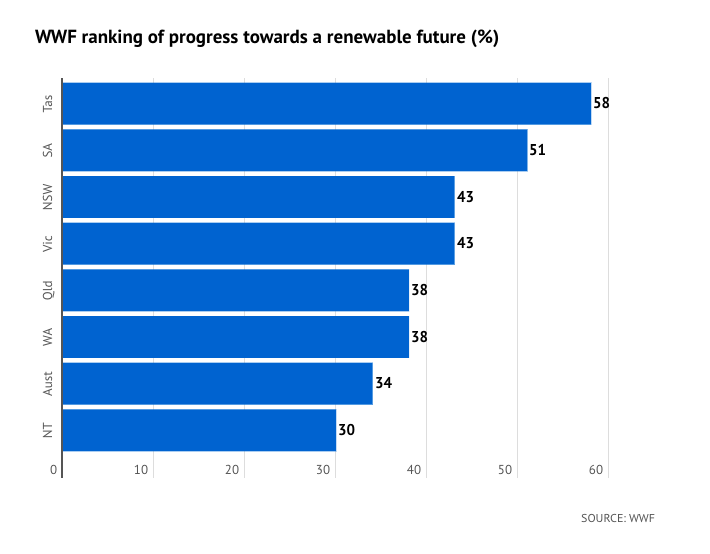The latest energy news from around the country:
National
Depending on their distribution area and access to controlled load, the Australian Energy Regulator (AER) foreshadows a reduction in retail electricity prices across the board for residential and small business customers.
Moving through 2021 to 2022, an average residential customer without controlled load is expected to save approx. $69 - $196 in their electricity costs, while an average small business customer is expected to benefit from an annual bill reduction between $317 and $577.
This reduction can be attributed to an anticipated fall in the wholesale electricity cost through this 21-22 period, a 17 - 22% reduction from the previous year level, thanks to the strong uptake of renewables across the NEM at both a distribution (e.g Rooftop PV) and utility scale.
Meanwhile for gas, the Australian Competition and Consumer Commission (ACCC) reports lower gas prices, but concerns about competition and an uncertain outlook.
In the ACCC’s 10th interim report about national gas supply arranged, reported prices for domestic consumers is falling “significantly over the first half of 2020, representing a significant shift in market pricing”.
Rates offered by producers for industrial and commercial users falling enough to be below “their lowest quality-weighted average” levels since 2016.
Where the concern factor lies for the ACCC is that national transportation and storage prices were relatively unchanged on its previous report, saying, “This implies that the monopoly pricing we first observed in our East Coast Gas Inquiry 2015 has continued”. Likewise, an uncertainty about supply outlook means a forecasted demand may not be met in 2026, and may emerge as early as 2024. Planned developments may defer this until 2028.
Queensland:
The Queensland government has announced five locations across regional QLD to host a large scale battery trial, in order to support the state’s uptake of renewable energy.
With nearly one in three customers in detached housing across the state having PV solar on their roof, Premier Annastasia Palaszczuk is looking to “make sure we’re using this important source of renewable energy int he right way and our network is keeping up with demand”
Excess renewable energy generated by Queenslanders will be stored for use, which includes capturing the low-cost renewable energy during the day to distribute into the market in the high-use peak periods.
Energy Minister Mick de Brenni says this will provide economic benefits right across Queensland, and contribute to the state’s economic recovery from COVID-19, as some components, such as switchgear, will be made locally.
Read more on the trial here
New South Wales:
Following the closure of Victoria’s Yallourn coal power station being brought forward, analysts have identified economic risk for the Vales Point coal power plant near Newcastle.
“With only an approximately seven-year operating life now remaining, and a very weak wholesale electricity forward curve, we believe Yallourn’s permanent exit may still be even earlier than now planned,” Goldman Sachs analyst Baden Moore said.
Alongside this is the state commitment to reaching net zero greenhouse gas emissions, as the Hunter region is zoned for renewable energy development in order to help reach this goal.
This zoning makes way for the anticipated $70m Hunter Hydrogen Hub, a positive step towards cleaner fuel. While this new development speaks to the state’s commitment to cleaner and more affordable renewables, it is yet to determine how this change may impact consumer costs, and if we will see a reduction in energy prices.
Victoria
The news this month on everyone’s lips - including our own - was the movement of Yallourn Coal Power Stations closure from 2032 to mid 2028. Supplying up to 22% of Victoria’s electricity demand and employing 500 workers, the move comes in the face of cheaper renewable energy sources simply out performing the archaic station.
With baseload electricity prices crashing from $80 a megawatt-hour in March 2020 to just $24 this past March, the decision is largely economic, with Yallourn lacking the flexibility of modern sources to remain viable.
In its place, Australia’s first four-hour battery storage facility will be commissioned to help compensate for the loss of output.
We covered in more depth what this closure could look like for Victorians, which you can read here.
South Australia
AGL has committed to constructing a 250MW grid scale battery at Torrens Island to deliver great system strength.
“South Australia will soon have a new ‘biggest battery’, funded by the private sector, which is a strong vote of confidence in our government’s energy policies,” said the Minister for Energy and Mining Dan van Holst Pellekaan.
“This will be the fifth grid-scale battery in our state, and the fourth one built since the last state election.
“This investment shows the confidence the private sector has in South Australia’s energy sector, as a result of the world-leading well managed renewables focus of the Marshall Government.
“It’s great to see AGL investing in new storage assets at the same time that the average household cost of electricity has come down by an average of $269 per year.
“Our energy policies are working to deliver cleaner, more affordable and more reliable power for all South Australians.”
You can read the full statement from Premier Steven Marshall here.
Tasmania
Tasmania continues with its reputation for sustainability by placing first on a new scorecard of progress towards green energy in Australia, out performing the federal government themselves.

Tasmania leads the pack by achieving 100 per cent renewables, legislating the largest renewables target in the world, and continuing to lead progress in renewable hydrogen production.